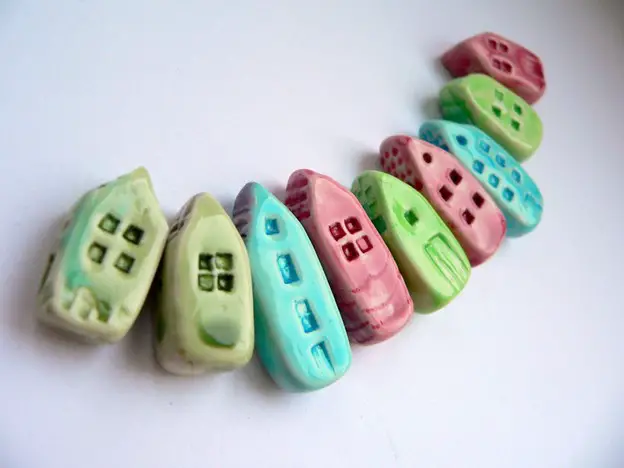Glazing is a great way to add colors to your pottery ware. However, that isn’t something you can achieve with home oven pottery firing. For glazing, the potteryware has to be fired at a very high temperature that is only possible in a kiln. So, how would you color your home oven pottery? Well, for one, you can use acrylic paint. However, there is a better option. You can opt for natural dyes to color your pottery ware. So, how would you do that? And what are your options? Let us check them out!
What Natural Dyes Can Be Used To Color Your Home Oven Pottery?
1. Get The Yellow Glow:
If you are looking to color your clay yellow, you can find a great natural dye in the kitchen. So, what is it? Well, it’s turmeric. If you have ever used turmeric in your food or shakes, you would have noticed that the spice tends to stain your hands very easily. It has the same effect as clay, especially air-dry clay. Start by kneading your air-dry clay and slowly add turmeric powder into the mix. Then, depending on how dark you want the tint to be, you can add more turmeric powder to your clay.
2. Charcoal Powder:
For artists looking for a dark blackish-gray tone, charcoal is the best natural dye. Start by breaking your charcoal into finer pieces and then grind it down to a smooth powder form. Make sure you add a few drops of water when kneading it with the clay. If the powder is too dry, the tint might not transfer onto the clay. A bit of water helps transfer the color. Make sure you don’t use a lot of water, or the powder can get runny, and you might get a very faded-out tint.
3. Beetroot Powder:
You can get a vibrant red or reddish-brown color from beetroot powder or paste. In both these methods, the colors can be a bit different. For the first method, cut your beetroot into small pieces and grind it into a paste. Make sure you don’t add extra water to the paste while grinding the beetroot. Now, squeeze out the juice from the pulp and knead it with the clay. This will impart a vibrant maroon-reddish color to the clay. On the other hand, you can dry out the beetroot pieces and then grind them to a fine powder. Then knead it with the clay to get the desired color tint. However, the color won’t be as vibrant as the fresh juice. Rather, it would be a bit on the brownish-red end.
4. Red Cabbage Leaves For Purple Tint:
Start by chopping your red cabbage leaves into small pieces; the smaller, the better. Next, heat up a pan with water and add your cabbage leaves to it. Let it simmer until the water becomes half its original volume. Now, remove the cabbage leaves and let the purple water simmer for longer until you have a thick paste-like liquid left at the bottom of the pan. Make sure you do this at the lowest heat setting to ensure the dye doesn’t burn off. Finally, let the paste cool down and remove it from the pan. You can now mix it with the clay to get a beautiful bluish-purple color added to your clay.
Things To Remember When Using Natural Dyes
- Natural dyes cannot resist kiln firing. So, this would work only with air-dry clay that has been dried in an oven. This is because the carbon-based organic matter burns off in the kiln, and the color wears away after the firing is done. So, use this only when firing your pottery ware in an oven.
- Only use air-dry clay to experiment with natural dyes. A great air-dry clay option you can work with is the Crayola Air Dry Clay. That comes in a convenient storage bucket that can be resealed to preserve the clay for a long time.
- Do not keep your naturally dyed clay in direct sun as they have very poor color-fastness to sunlight.
Conclusion
Natural dyes are a non-toxic way to color your clay when firing the pottery ware in a home oven. However, they might not be as bright as commercial dyes and colors available in the market. So, if you are looking for a soft color added to your clay piece, natural dyes are a perfect choice.







